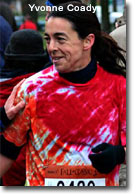
|
|||||||||||||||||||
|
|||||||||||||||||||
| The Daughter's Program at CCWESTT | |||||||||||||||||||
Our first night there we met Margaret-Ann Armour, a woman who was just awarded the Order of Canada. The Order of Canada is the biggest Canadian award given to people who have acted as an example of the Hebrew motto Desiderantes meliorem patriams which translates to They desire a better country. We walked her home and she told us the story of how she decided which university she would go to and what she thought when she was given this award. I was very honoured to have met her and talked to her. Most people find it hard to make new friends, and some don’t. But the instructors who lead this program made it a lot easier for the people who have more trouble making new friends. We played various name games and one with imaginary balls. The games helped us to learn people's names and a little bit about them, except the one with the imaginary coloured balls which was more of a focus and concentration game. The first game that we played was The West Wind Blows, this is a game where there is a chair for everyone except one person. Everyone sits in their chairs and the one person left goes in the middle and says something that applies to them, like: "the west wind blows for every one wearing pink", and then everyone wearing pink including the person in the middle would try to find a new chair. The trick is you, can’t sit in the same chair twice so usually a new person ends up in the middle. We then played Picnic, Picnic. In this game, everyone sits in a circle and one person chooses a pattern but only says the first item in the pattern. For example, if I picked the pattern of fish I would then say "I’m having a picnic and bringing halibut". I would then only allow the people bringing another type fish to come on the picnic. For lunch, we walked to a different building and had lunch with our parents. Our moms were very happy that they were having fun. For lunch they gave the kids macaroni & cheese, and the parents had Chinese Chicken Salad. After lunch, we played soccer and studied the aerodynamics of a soccer ball. We learned about why a soccer ball is shaped like a sphere and why the panels are where they are. We learned that the pattern on a soccer ball is called a truncated icosahedron. We also learned how to make the soccer ball curve the way you want it too when you kick it. It was really interesting to see how the panels on the soccer ball made a difference in the way the soccer ball rolls, for example the truncated icosahedron curved properly whereas the other patterned ball was really random. Next we learned about RIM, the company that makes the Blackberry. We were each given a Blackberry to play around with and figure out how to do new things with them, like take pictures, play games and send email. Our instructors arranged a race to see who could finish all the Blackberry tasks written on the board. The prize was a chocolate blackberry and there was one for the first three people done. Once we were done that, we dissected the Blackberrys. Inside there was tons of different types of hardware. I really liked the Blackberry race but I wish I could have kept the Blackberry. The next day, we ate breakfast with our parents and then visited the Guelph Arboretum to look at all the types of trees there were. The lady that gave us the tour explained everything very well. Sometimes, she even told us a story about the tree. At the end of the tour she let us go see the frogs and some people even caught the frogs. It was really interesting to see trees from all around the world, to learn what all the Latin names meant and the frog pond was really cool.For lunch, we went for a picnic and made ice cream. We put cream, milk, sugar, and chocolate in a small bag and then we put the small bag in a bigger bag with ice and salt in it. After doing that, we wrapped it up in a shirt and swung the shirt up and down and side to side. Once it was frozen we ate it. It was interesting to learn why the salt made the ice stay solid longer and the ice cream tasted really good. After that wonderful experience, we went to go study the digestion of a cow. The professor told us about how the cow's digestive system works and about the cow actually has four stomachs. After that we got to go into the barn to look at some sheep, pigs and cows. We weren't allowed to touch the cows because they were in a trial experiment and touching them might affect the results. Overall it was like school in that we learned new things, but we learned more than we would in two normal school days and with more hands on activities. We would strongly recommend anyone to do this program and the only thing we would have changed would be for it to have lasted longer. Thank you to Anne Condon and Jade Bridges for giving us the chance to do this.
Haley and Georgia Gibbs
|
|||||||||||||||||||
| Building a Force to be Reckoned With | |||||||||||||||||||
Let me start at the beginning. Ms. Ali is the coach of the Killrobotics team. Her team was composed of five high school girls (grades 10-11) who competed in the VEX Robotics Challenge. They did very well, I might add. The team placed first at last year’s competition held at West Vancouver Secondary School. As I read about the team’s accomplishments, I realized that all the things I admired about T-X, I also admired about the Killrobotics team. First of all, T-X from the third movie was by far the most technologically advanced and “kicked the most butt” of all the Terminators – much as the Killrobotics kicked butt at their competition. She was on the cutting edge of technology, just like the team. But she was also female, representing the emergence of women as a force to be reckoned with in the world of IT. I was curious about how the girls got started with the VEX Competition, and I found out that two of the Killrobotics team had participated in the ChicTech competition (http://wics.cs.sfu.ca/ChicTech/). When they found out that they would be too old to do it the next year, they looked for something else to quench their thirst for computer science. They were told about the VEX Competition that Jason Brett at David Thompson Senior Secondary was participating in and they put together an all-female team and embarked on building their very own robot. There is at least one major difference between T-X and the Killrobotics team. T-X wasn’t very nice. The girls, however, showed tremendous communication and compromise – even when looking for a name for their robot. Amanda wanted to name it Bill, and Alma wanted to name it Bob. So they decided on Billy-Bob. I also was curious how Ms. Ali got into computers in the first place. She said that her dad bought her and her siblings a computer to play with and program on. Since then she’s always enjoyed technology. Now, as a technology teacher, she really enjoys “giving the students a challenging problem to figure out and seeing their reaction when they finally get it to work”. She says that she particularly likes this part because she knows what that feels like! I also talked to Amanda about how she got involved with VEX. She said she took to the idea of a robotics club right away – “the thought of making something from nothing much and just an idea, at least to me sounds pretty spiffy”. I couldn’t agree more. Amanda says she’s really interested in computer science and is thinking about getting into programming or network administration. She is just one example of a strong young woman pursuing a career in IT despite the fact that the field is still mostly male-dominated. If you share Amanda or Ms. Ali’s passion, or you are interested in getting involved with VEX, visit the website at http://www.vexlabs.com/ or email Faith at bcoma@shaw.ca for more info. |
|||||||||||||||||||
| Computer Scientist Helps Youth Explore Neptune | |||||||||||||||||||
Dr. Yvonne Coady does something very cool using computer science at the University of Victoria. In fact, Yvonne is frequently invited to conferences all over the world to discuss her research in “improving the modularity of computer systems”. With three computer science courses under my belt, that still sounds as mysterious to me as it probably does to you. However, there is no debating that she and her Mod(ularity) Squad work on the cutting edge of computer science research. However, unlike some professors who spend all of their time in the lab, Yvonne is not just a brilliant researcher. She also likes to run marathons (even though she says she only made $800 as a professional triathelete). And, she also instruments programs that encourage young women and minorities to get involved with computer science. One example is the outreach work she does at the University of Victoria. In particular, she is interested in opening up the world of science and engineering up to Aboriginal students. Aboriginal students, like women, are significantly underrepresented. At the CCWESTT Conference, we learned about one particular initiative involving Yvonne last summer. For three weeks, youth between the ages of 12-17 from a nearby Aboriginal community came to UVic. During this time, Yvonne and her co-organizers used several different tools in order to encourage the students to learn programming in a fun and creative manner. The students were first taught about Project NEPTUNE, a series of marine observatories to be built off the coast of Vancouver Island. The NEPTUNE observatories are to house different instruments and will be connected with 800km of fibre optic cable, so that they can communicate with each other rapidly. Further measurements will be preformed by unmanned, remote, undersea vehicles that are controlled onshore and can dock at the various underwater observatories. What are these observatories designed to study? The answer is: many facets of ocean science, from plate tectonics and predicting natural disasters like tsunamis, all the way to studying gases in the ocean associated with climate change. With the super high speed connection between the observatories, data of superb quality can be recorded and transmitted among the stations. This issue was particularly relevant to the Aboriginal students, because the fibre optic cable is going to be run near some of their heritage sites. Understanding the project could be not only get the students excited about technology, but also involve the Aboriginal community more deeply in something connected to their heritage lands. As a next step, the students were invited to build their own NEPTUNE-style vehicle to explore the classroom! The tool they were given was LEGO Mindstorms. In three groups, the students built their robot in the first week. During the next week, they were taught the Mindstorms programming language. Students then programmed their robots to perform such tasks as following a line around the classroom or taking “samples” from the environment. These tasks were designed to simulate some of the real tasks the NEPTUNE vehicles will perform. Students loved the hands-on aspects of the Mindstorms activity. They learned not only about programming and robotics, but about leadership and teamwork - skills that will help them in any field they choose to pursue. As a symbol of the project’s success, at the end of the three weeks, the organizers were approached by two girls who wanted to know how they could continue on learning about computer science. While this is just one initiative that Yvonne is involved with, the theme of her projects is the same. She wants to spark creativity and excitement with computer science at a young age. She also underlines the importance of doing such outreach work. “One thing I would like to work to change,” she says, “is attitudes about the value of working on this challenge, and have it recognized as a viable workload option, instead of something that is always done off the side of people's desks”. And let me tell you, after meeting her at the Conference: if there’s anyone who can do it, it’s Yvonne! Her bubbly demeanor and palpable passion for computer science is utterly contagious. Even though she took a meandering path into computer science (she has a liberal arts degree, as well as a diploma in kinesiology). Furthermore, with the focus on how the remote vehicles help with tackling climate issues and saving lives through natural disaster prediction, she is making real inroads into inspiring young people.
|
|||||||||||||||||||

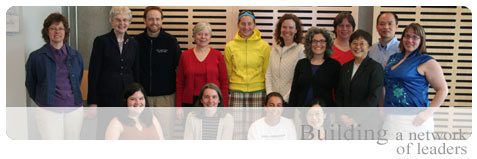
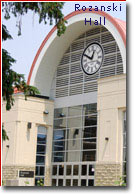
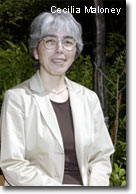 It was a dark and stormy night and I was in a secluded cabin deep in the forest.
It was a dark and stormy night and I was in a secluded cabin deep in the forest.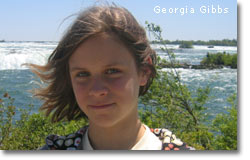 This report is about our experience being in the daughter's program of the CCWESTT Conference at the University of Guelph. Nineteen girls arrived at this event on a Thursday night, no one really knowing what to expect. Our mom had only read us the schedule, we had no real idea who we would meet or who would lead the program. Most of the girls had never even been to Guelph before, all we knew was that we would make memories and meet new people we probably never would have met any other way.
This report is about our experience being in the daughter's program of the CCWESTT Conference at the University of Guelph. Nineteen girls arrived at this event on a Thursday night, no one really knowing what to expect. Our mom had only read us the schedule, we had no real idea who we would meet or who would lead the program. Most of the girls had never even been to Guelph before, all we knew was that we would make memories and meet new people we probably never would have met any other way.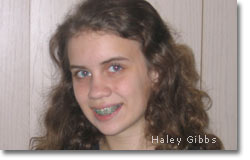 The first activity that we did was bridge building and collapsing. We all made bridges out of duct tape, popsicle-sticks and glue and then we tried to put as much weight on them as possible. We were given lots of time to build the bridges. We found that the duct tape worked the best for building the bridges. Most of the bridges broke and collapsed, except for the three that held the maximum of 30 pounds. I think my bridge could have made it to 50 pounds. We also learned a lot about architecture such as, if we actually built bridges out of duct tape it wouldn't really work very well.
The first activity that we did was bridge building and collapsing. We all made bridges out of duct tape, popsicle-sticks and glue and then we tried to put as much weight on them as possible. We were given lots of time to build the bridges. We found that the duct tape worked the best for building the bridges. Most of the bridges broke and collapsed, except for the three that held the maximum of 30 pounds. I think my bridge could have made it to 50 pounds. We also learned a lot about architecture such as, if we actually built bridges out of duct tape it wouldn't really work very well.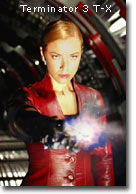 I always thought that T-X, the robotic assassin from Terminator 3, was by far the best Terminator and I never really thought about why. But when I received an email from Seema Ali, a very talented teacher at Killarney Secondary School in Vancouver, I started to realize just why T-X was so cool.
I always thought that T-X, the robotic assassin from Terminator 3, was by far the best Terminator and I never really thought about why. But when I received an email from Seema Ali, a very talented teacher at Killarney Secondary School in Vancouver, I started to realize just why T-X was so cool.